The audio interface is one of the most important components of your home studio.
By the end of this post, you’ll know the 3 key factors to choosing the right interface for your home recording studio.
Here are the three most important factors to consider when choosing an audio interface: Inputs, Outputs, and Price.
Inputs
The first factor you should consider when choosing an audio interface is the number of inputs. This will usually be determined by how many channels you will wish to record at once.
If you’re not sure how many inputs you need, consider how you will use the interface.
If your plan is only to produce music with virtual instruments in your DAW or to mix and master pre-recorded tracks, you won’t necessarily need any analog inputs.
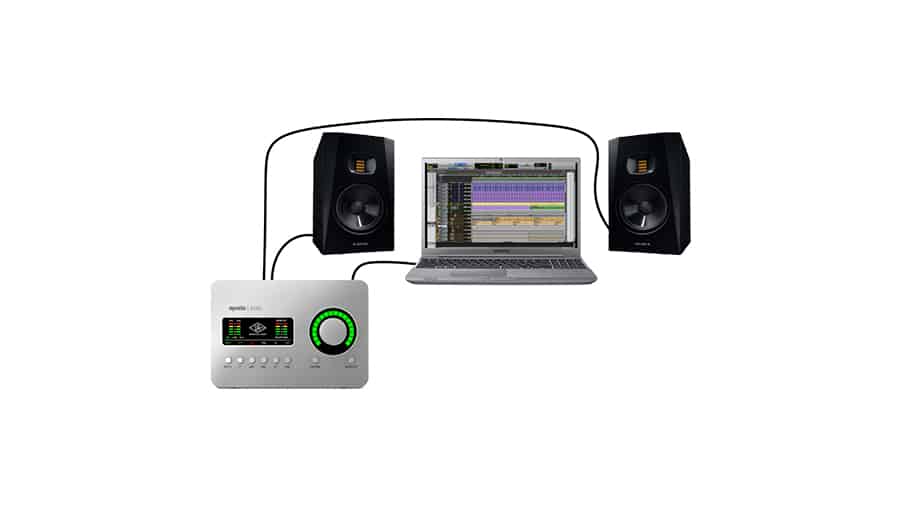
If your plan is to make simple recordings of vocals and guitar or to build songs by layering one instrument at a time, you can probably get away with just two inputs on your interface.
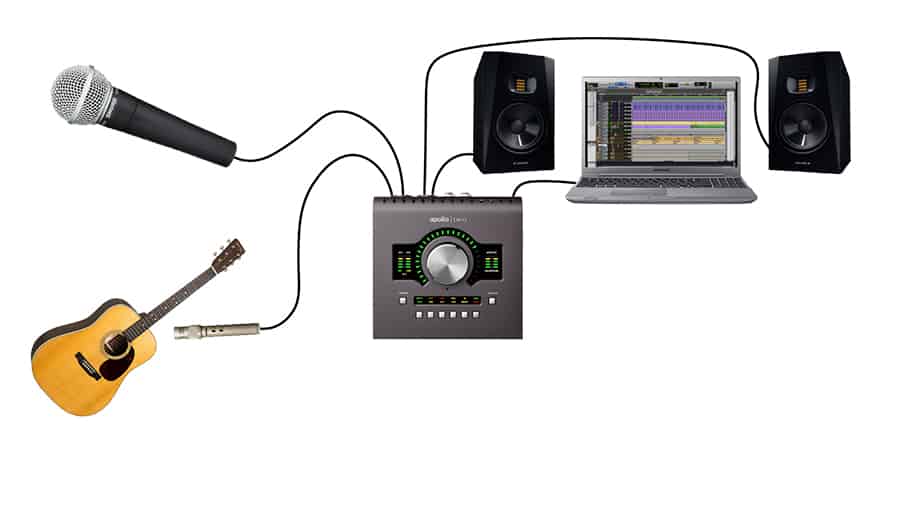
However, if you plan to record drums or a live band, you will need an interface that allows you to record several tracks at once.
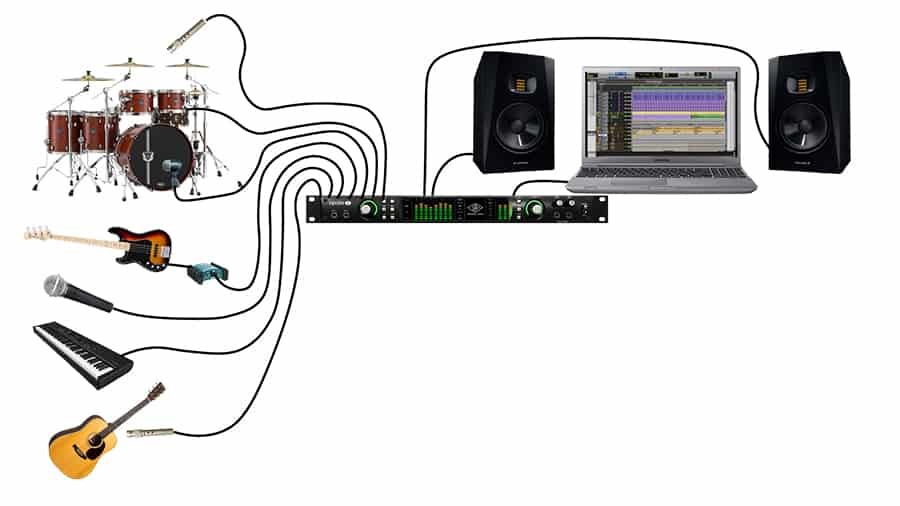
Types of Inputs on an Audio Interface | Mic Level, Instrument Level, & Line Level
It’s important to understand the difference between mic level, instrument level, and line level signals when choosing an audio interface. I wrote a whole post, including a video, comparing these signal types that you can check out here.
To illustrate why signal levels are important, let’s compare the Focusrite Scarlett 2i2 and the Focusrtie Scarlett 4i4.
The 2i2 has 2 inputs and the 4i4 has 4 inputs. This might be deceiving…
You may think that you can record 2 microphones with the 2i2 and 4 microphones with the 4i4, but this isn’t the case. That’s because both of these interfaces only offer 2 mic level inputs, with microphone preamps.

The 2 extra inputs on the 4i4 are line level inputs, which are for recording keyboards or sequencers, not microphones directly. In order to record microphones with a line level input, you would need an external microphone preamp.
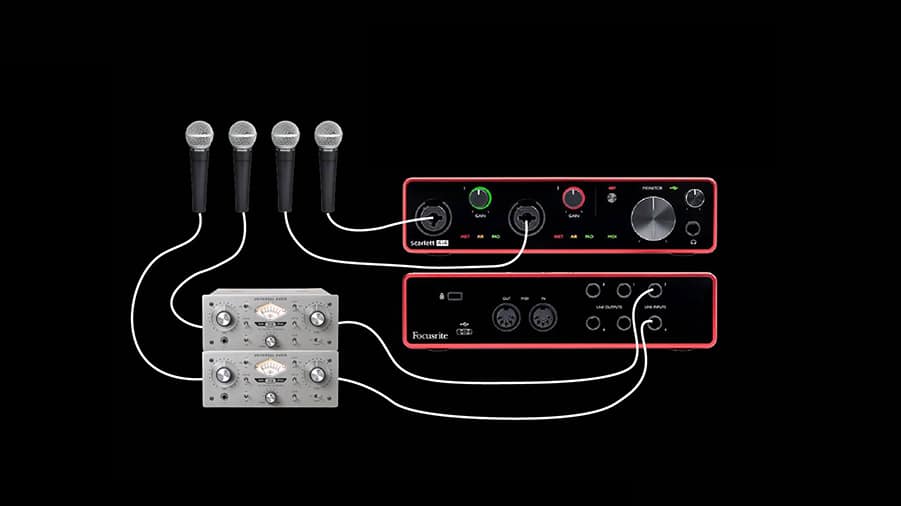
Phantom Power (+48 VDC)
You should also make sure that the interface you choose is capable of supplying phantom power, or +48V.
Phantom power isn’t necessary for recording dynamic microphones, but it is required for recording condenser microphones and active DI boxes.
Outputs
In addition to the number of inputs, you should also consider the number of outputs when choosing an audio interface.
Basic Recording
If you simply want to record yourself, all you will need is two line outputs for studio monitors and one headphone output for monitoring.

Most audio interfaces will provide these basic outputs, but there are some scenarios where you might want a few extra outputs.
Recording Multiple Performers
If you will be recording other people, you will benefit from an additional headphone output. This will allow you and the musician to listen through headphones at the same time, maybe even with separate headphone mixes.

Mixing with Outboard Audio Equipment
If you plan to expand your studio to include outboard compressors, EQs, and other outboard effects, you’ll need a few extra line outputs. That way you can send audio out of the interface, through the outboard effect, and back into the audio interface when mixing.
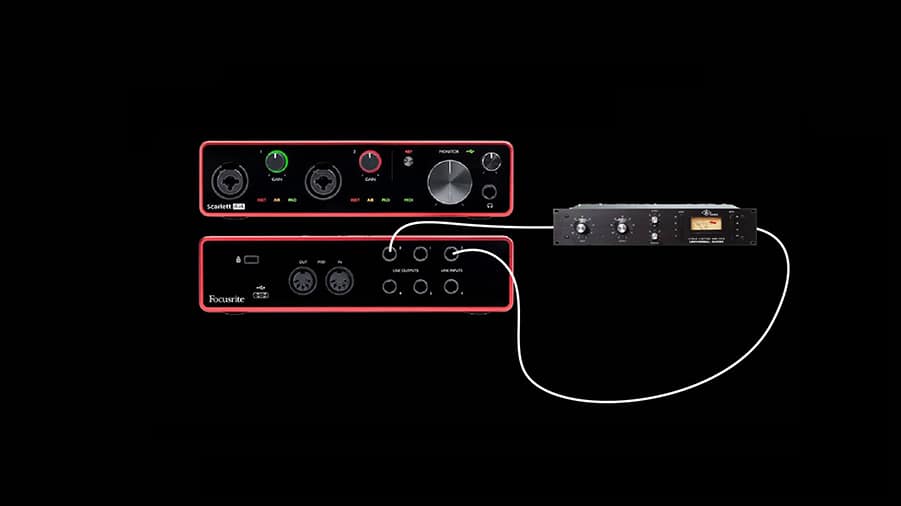
Mixing in Surround Formats | 5.1, 7.1, Dolby Atmos, etc.
If you want the ability to mix in 5.1 or another surround format, you’ll need a line output of your interface for each speaker in your system.

Price
Once you have determined the number of inputs and outputs that you’ll need, it’s time to decide if that fits in your budget.
The number of inputs and outputs on an audio interface are not the only factors to how much it will cost.
You can find interfaces with 8 microphone preamps for less than $300, while you can find interfaces with only 2 microphone preamps for over $2000.
What’s the difference? Aside from the inputs and outputs, what other factors determine the price of an audio interface?
Microphone Preamp Quality
One of the biggest differences between an entry-level audio interface and a more expensive audio interface is the quality of the microphone preamps.
Don’t get me wrong – modern entry-level audio interfaces offer amazing microphone preamps for the money. However, there are certainly benefits to the preamps you get with premium audio interfaces.
Higher-quality mic preamps usually provide more gain, which can be useful if you are using a microphone such as the Shure SM7B which requires a lot of gain.
Lower-quality mic preamps are usually much more noisy than the preamps you’d find in more expensive audio interfaces. Higher-quality microphone preamps will help you to reduce the overall noise floor of your recordings.
You’ll also learn that some microphone preamps are designed to be very transparent, while others are sought after for their unique color. You may decide that it’s worth spending a bit more to get a set of microphone preamps that are famous for their signature sound.
On-Board Digital Signal Processing (DSP)
Another factor that plays a role in the price of an audio interface is its ability to process audio.
This is one factor that makes the UAD audio interfaces so appealing – they offer powerful on-board processing which reduces the CPU requirements of your computer.
Many interfaces, including those by UAD, even come with a pack of premium plugins.
Connection Type | USB, Thunderbolt, Ethernet, etc.
Finally, the connection type you choose will play a role in your decision and the price of the interface.
If you want to keep it simple, you should choose an interface with either a USB or a Thunderbolt connection.
If you need an interface that can receive network audio streams over AVB or Dante, you might choose one that connects via Ethernet.
Download the FREE Home Studio Checklist
I want to offer you a FREE Recording Studio Checklist to make sure you’ve got everything you need to make professional recordings.
This will help you to ensure you’ve got everything you need to get started making professional-quality recordings in your home studio!
